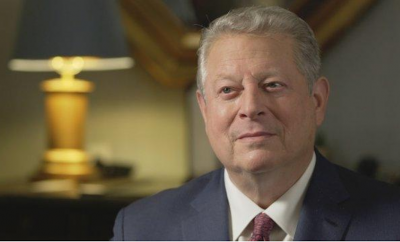Environment
How do we teach kids climate change without frightening them?

There’s no denying that climate change can be a terrifying topic, even for adults. We’ve heard the worst-case scenarios: major American cities like New York completely underwater as the sea levels rise, volatile weather bringing devastating super storms and a roasted husk of a planet that can’t support life as we know it. It’s no wonder only 63% of Americans as of 2014 even recognize that global warming is happening. It’s a terrifying topic.
Yet it’s a little foolish to not recognize it as an issue just because it’s scary (and quite overwhelming) to think about. The sea levels are up seventeen centimeters in the last century (doubling within the last decade), the Antarctic and Greenland ice sheets were measured to lose hundreds of cubic kilometers every year between 2002 and 2006 and U.S. record high temperature events have been on the rise since 1950, along with higher numbers of intense rainfall events. And that’s just to name a few measurable effects of global warming.
So the big question: how do you teach kids climate change without making them fearful? That fact is, if we have any hope of combating climate change, the next generation needs to know that it’s going on and they need to understand the underlying causes of global warming. Here is one example of how to teach kids climate change.
Lessons from a middle school teacher
Luckily the prospect of how to teach kids climate change doesn’t have to be as terrifying as it seems. It’s all a matter of how the topic is presented. Is it told in a scary doomsday-like tone, or are children encouraged to be hands-on and proactive about the topic?
One example of stellar teaching comes from Bertha Vazquez, a middle school earth science teacher in Florida. She told NRR about some of her teaching methods.
Students calculate how many desalinization plants would be required to turn rising sea levels into a sustainable source of fresh water with climate scientists who come in to talk to the class. They comb the school for ways to live more sustainably, like energy-efficient light bulbs, smart thermostats and white paint on the roof to keep the school cooler. Students learn about what people have done to revert some of the damage, like how the ozone layer is mending.
But you can’t always depend on a school district’s curriculum or individual teachers to know how to approach the subject.
Having the global warming talk at home
Scholastic recommends that parents or other guardians talk to children about climate change. The median U.S. middle and high school science teacher only spends about one to two hours even covering the topic, according to Science magazine on the topic. And odds are, kids will hear about global warming before middle school, and it might not be in the most positive light (ie. someone trying to tell them it’s a hoax).
Scholastic recommends just working with children under eight years of age so they can have a positive relationship with the environment. Take the child hiking and camping or have your child help with gardening. Read books about the natural cycles and animals. If climate change does come up, state that adults are working on the issue and someday he/she could be a part of the solution.
Around the age of eight and older, students can start to grasp global warming in a more broad and abstract way. Present the problems, but also the solutions people are working on and ways we can work on the problem ourselves in a positive and balanced manner. Think of ways to make the household greener with the family, like watching the carbon footprint together. There are also online learning tools for kids, like the National Wildlife Federation’s Climate Classroom.





0 comments